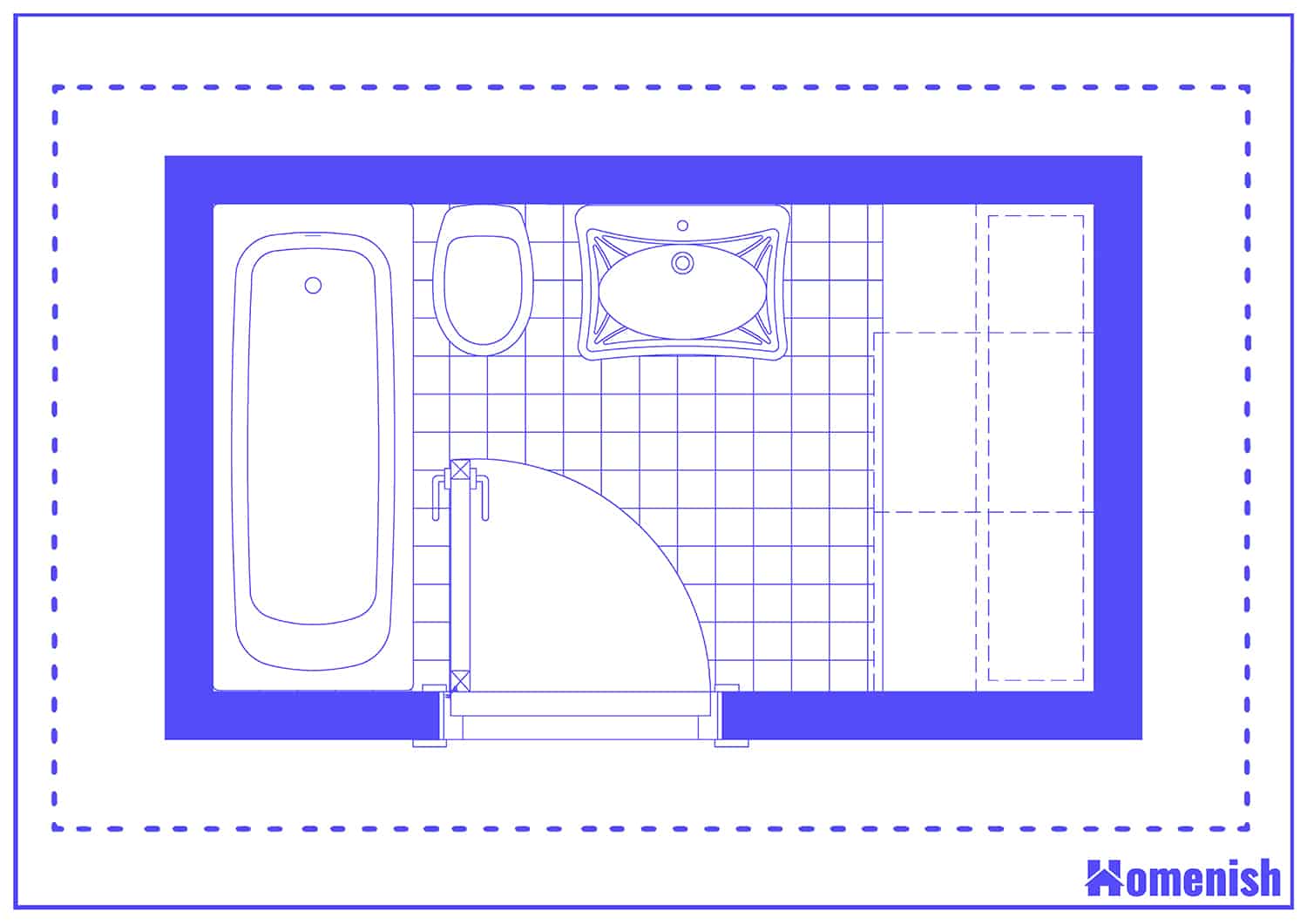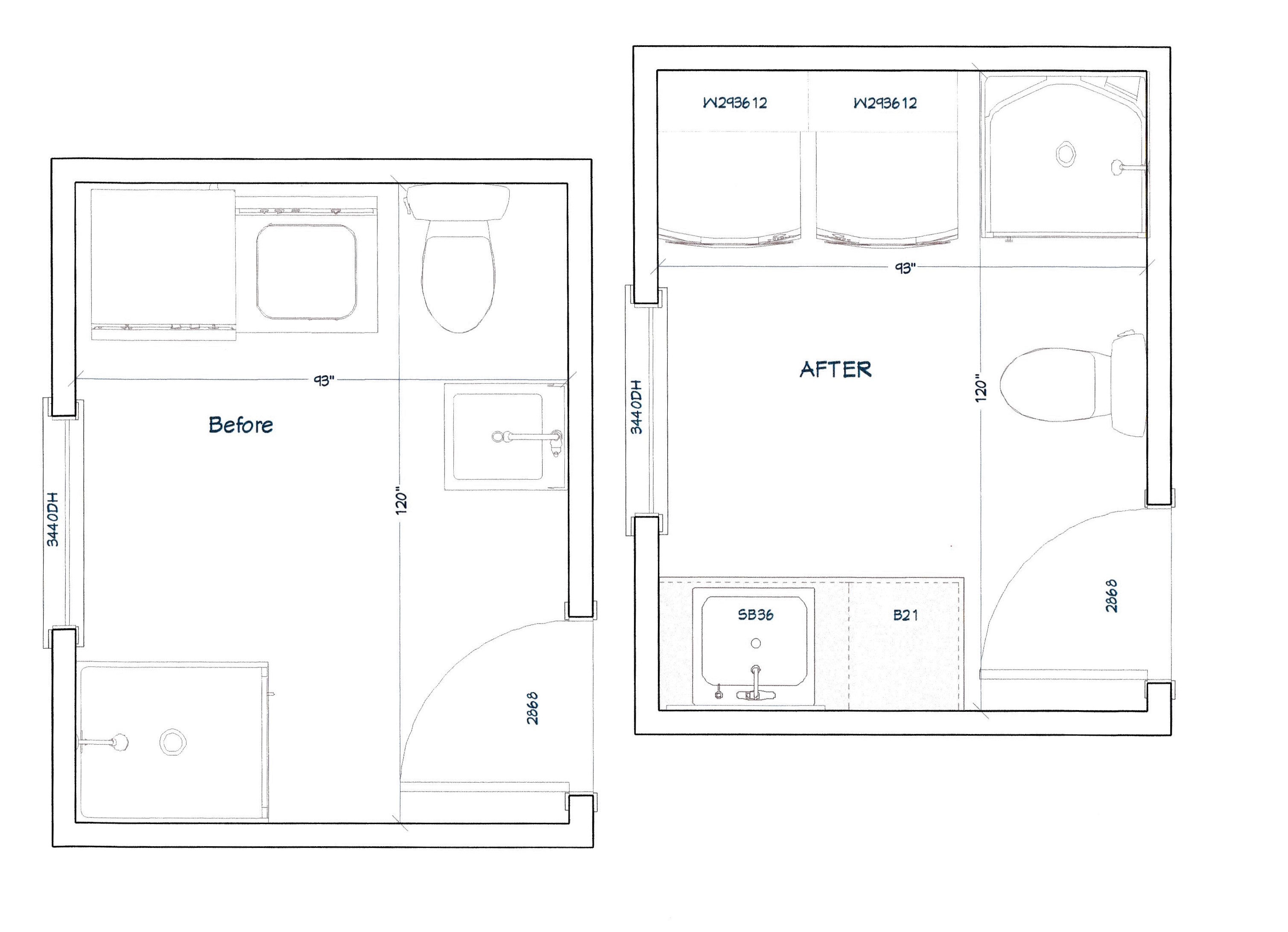Master Bathroom Design Considerations

The master bathroom, often considered a sanctuary within the home, deserves meticulous planning to ensure both functionality and luxury. When combined with a laundry area, the challenge lies in maximizing space while maintaining a sense of serenity and practicality.
Maximizing Space Utilization
Incorporating a laundry area within the master bathroom presents a unique opportunity to streamline daily routines. To maximize space utilization, consider implementing a few key strategies:
- Vertical Storage: Utilize vertical space with tall cabinets, shelves, and drawers to store towels, toiletries, and laundry supplies. This minimizes floor footprint and maximizes storage capacity.
- Multifunctional Furniture: Opt for furniture that serves multiple purposes, such as a vanity with built-in laundry hampers or a linen cabinet that doubles as a storage space for cleaning supplies.
- Compact Appliances: Choose compact washers and dryers that fit seamlessly within the allocated space. Stackable units are particularly effective in maximizing floor area.
- Wall-Mounted Fixtures: Wall-mounted sinks, toilets, and towel bars minimize floor clutter and create a spacious feel.
Common Design Layouts
Several design layouts cater to different needs and preferences. Each layout offers unique advantages and disadvantages to consider:
- Open Concept: An open concept design seamlessly integrates the bathroom and laundry area, creating a spacious and airy feel. However, this layout may require careful planning to prevent visual clutter and maintain privacy.
- Partitioned Layout: A partitioned layout separates the bathroom and laundry area with a wall or partition, providing privacy and distinct zones. This layout is ideal for larger spaces and allows for a more organized feel.
- Separate Rooms: For ample space, consider dedicating separate rooms for the bathroom and laundry. This layout provides maximum privacy and flexibility but requires a larger footprint.
Creating Seamless Flow
A well-designed master bathroom with laundry seamlessly integrates both areas, creating a cohesive and functional space. Consider the following tips:
- Consistent Flooring: Use the same flooring material throughout the bathroom and laundry area to create a visual connection and sense of flow.
- Matching Color Palette: Maintain a consistent color palette across both areas, using complementary shades to create a harmonious aesthetic.
- Similar Lighting: Ensure consistent lighting levels in both spaces to create a balanced and welcoming atmosphere.
- Open Shelving: Open shelving units in the laundry area can help to visually connect the space with the bathroom, creating a sense of openness and flow.
Laundry Integration Strategies

Integrating laundry facilities into the master bathroom offers a convenient and space-saving solution, particularly in smaller homes. This approach streamlines daily routines and creates a cohesive living environment.
Dedicated Laundry Closets
A dedicated laundry closet provides a discreet and organized space for laundry appliances, storage, and supplies. This approach offers flexibility in layout and size, allowing for customization to suit individual needs.
- Advantages:
- Privacy: Concealing laundry activities behind closed doors enhances privacy and aesthetics.
- Organization: Dedicated space allows for efficient storage of laundry supplies, hampers, and ironing boards.
- Sound Insulation: Enclosing the laundry appliances minimizes noise transmission to other areas of the home.
- Disadvantages:
- Space Requirements: A dedicated closet necessitates a significant portion of bathroom space, which may not be feasible in smaller bathrooms.
- Cost: Constructing a closet involves additional expenses for materials, labor, and potential plumbing and electrical modifications.
- Floor Plan Layout Examples:
- Linear Layout: A narrow closet along one wall of the bathroom provides a practical and efficient use of space.
- L-Shaped Layout: An L-shaped closet can be incorporated into a corner of the bathroom, maximizing space utilization.
Built-in Laundry Units
Built-in laundry units seamlessly integrate appliances into the bathroom design, creating a streamlined and modern aesthetic. This approach maximizes space utilization and minimizes visual clutter.
- Advantages:
- Space Efficiency: Built-in units eliminate the need for separate cabinets or shelving, maximizing available space.
- Aesthetic Integration: The integrated design creates a cohesive and stylish look, enhancing the overall bathroom aesthetic.
- Customizability: Units can be customized to match the bathroom’s design and style, offering a personalized touch.
- Disadvantages:
- Cost: Custom-built units can be more expensive than standard appliances and require professional installation.
- Limited Flexibility: Built-in units may restrict future appliance upgrades or changes to the bathroom layout.
- Floor Plan Layout Examples:
- Under-Counter Units: Incorporating laundry appliances beneath a vanity counter creates a discreet and space-saving solution.
- Wall-Mounted Units: Wall-mounted units free up floor space and create a minimalist aesthetic.
Open Shelving Systems
Open shelving systems provide a visually appealing and accessible solution for laundry storage. This approach allows for easy access to supplies and promotes a sense of openness in the bathroom.
- Advantages:
- Visual Appeal: Open shelves create a modern and airy feel, showcasing decorative laundry baskets and accessories.
- Accessibility: Items are easily accessible, eliminating the need to rummage through cabinets or drawers.
- Cost-Effective: Open shelving systems are generally more affordable than custom cabinets or closets.
- Disadvantages:
- Clutter: Open shelves can easily become cluttered if not carefully organized.
- Dust Accumulation: Items on open shelves are more susceptible to dust accumulation, requiring regular cleaning.
- Floor Plan Layout Examples:
- Wall-Mounted Shelves: Utilize vertical space by installing shelves along bathroom walls.
- Corner Shelves: Maximize space utilization by incorporating shelves into bathroom corners.
Maximizing Storage and Minimizing Clutter
Creating a functional and organized laundry space within the master bathroom requires careful planning and strategic storage solutions.
- Vertical Storage: Utilize vertical space with tall cabinets, shelves, and organizers to maximize storage capacity.
- Multi-Purpose Storage: Employ multi-purpose furniture, such as a vanity with built-in drawers or a bench with storage compartments, to maximize space efficiency.
- Folding Stations: Designate a dedicated folding station with a countertop and shelves to streamline laundry tasks and minimize clutter.
- Hidden Storage: Utilize hidden storage solutions, such as under-sink cabinets or pull-out drawers, to conceal clutter and maintain a tidy appearance.
- Declutter Regularly: Regularly declutter laundry supplies and donate or discard items that are no longer needed.
Master Bathroom with Laundry Floor Plan Examples: Master Bathroom With Laundry Floor Plans

Floor plan layouts for master bathrooms with laundry can vary greatly depending on the size of the bathroom, the preferences of the homeowner, and the specific needs of the family.
Master Bathroom with Laundry Floor Plan Examples
Here are some examples of common floor plan layouts for master bathrooms with laundry:
| Layout | Dimensions | Room Descriptions | Design Features | Suitability |
|---|---|---|---|---|
| Linear Layout | 10′ x 15′ | A long, narrow space with the laundry area at one end and the bathroom fixtures at the other. | A single, long countertop with a sink, toilet, and shower/tub on one side and a washer and dryer on the other. | Suitable for smaller bathrooms with limited space. |
| L-Shaped Layout | 12′ x 12′ | A more spacious layout with the laundry area tucked into a corner of the bathroom. | A vanity with a sink and mirror, a toilet, a shower/tub, and a washer and dryer in a separate area. | Suitable for medium-sized bathrooms where privacy is desired for the laundry area. |
| U-Shaped Layout | 14′ x 14′ | A spacious layout with the laundry area enclosed within the bathroom. | A vanity with a double sink, a toilet, a shower/tub, and a washer and dryer in a separate alcove. | Suitable for large bathrooms where the laundry area is a key part of the bathroom design. |
| Split Layout | 12′ x 18′ | A layout with the laundry area separated from the bathroom by a wall or partition. | A vanity with a sink and mirror, a toilet, a shower/tub in one area, and a washer and dryer in a separate room. | Suitable for larger bathrooms where complete separation of the laundry area is desired. |
Tips for Customizing Master Bathroom with Laundry Floor Plans
Here are some tips for customizing floor plans to suit individual needs and preferences:
* Consider the size of your bathroom: Choose a floor plan that will fit comfortably in your bathroom space.
* Think about your lifestyle: If you do a lot of laundry, you’ll need a larger laundry area.
* Choose the right fixtures: Select fixtures that are the right size and style for your bathroom.
* Add storage: Incorporate storage space for laundry supplies and other bathroom essentials.
* Think about lighting: Make sure your bathroom has adequate lighting for both the laundry area and the bathroom fixtures.
* Consider the flow of traffic: Ensure that there is enough space for people to move around comfortably.
* Don’t forget the ventilation: Proper ventilation is essential for both the laundry area and the bathroom.
